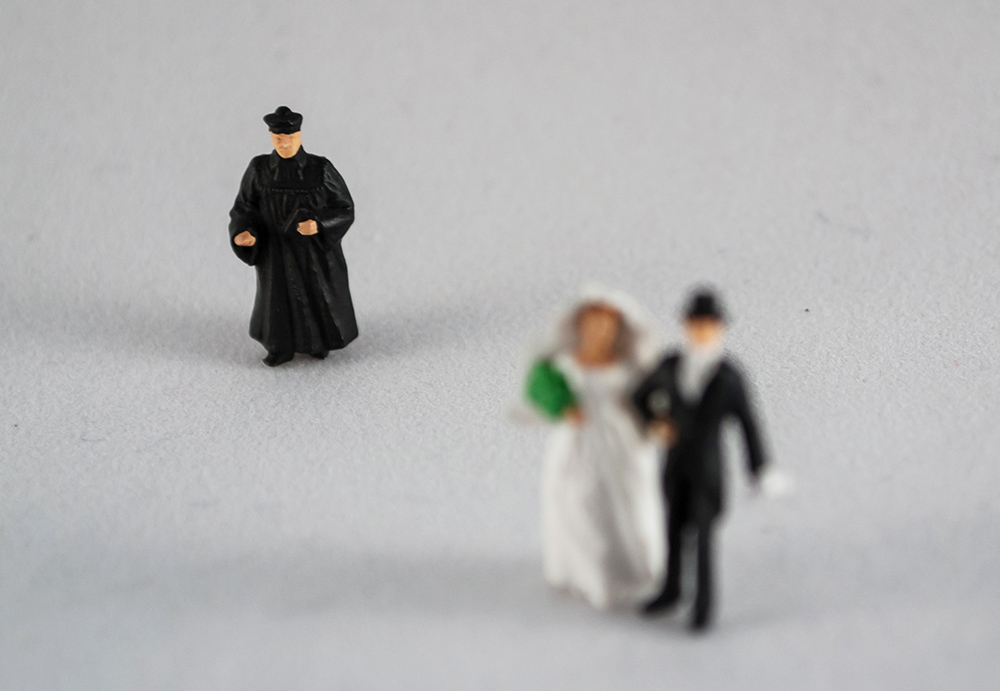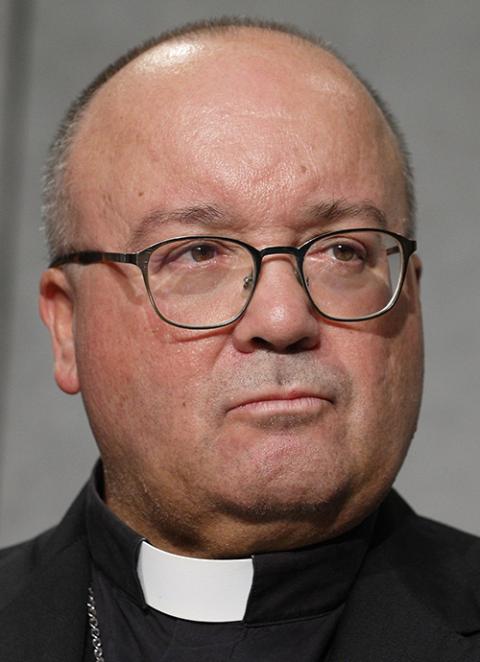
(Dreamstime/3dm1983)
When the possibility of married priests is raised, it is normally in the context of solving a problem — how to get more priests or keep the ones already in place. Rarely is the possibility raised primarily as something good for the priesthood and for the church.
Archbishop Charles Scicluna of Malta has taken that rare step in advocating for married priests. His starting point, expressed in an exclusive interview with NCR, is not some strategy to fill a growing number of vacancies in need of ministers to dispense sacraments. His starting point is the health of clergy leading what he describes as "double lives," as well as the loss to ministry of men who fall in love and leave to get married.
Whether intentional or not, Scicluna's proposal also begins, by implication, to excavate deeper questions about the nature of priesthood, of the sacramental life of our communities, of what ordination — shaped, modified and refashioned over centuries — has come to mean in the 21st century.
Scicluna's starting point is a simple and unassailable proposal grounded in a human concern. "One of my worries is that people are put in a situation where they are comfortable with a double life," he said.
"This is not to diminish the beauty of celibacy or the heroic commitment of people who have accepted celibacy as a gift and live it," he continued. "But I think it is good that we discuss it."
One might add that there is no better time to discuss it, given the emphasis of this papacy on synodality, that broadly consultative approach to discernment.
The topic enjoys favorable momentum in many quarters. Surveys have shown Catholics in favor of married priests and the proposal for married priests was approved by the 2019 synod for the Amazon.
Scicluna's credentials are impeccable. He is an unusual example of continuity from previous papacies into a deep alignment with the current pope. The fact that he was able to transition seamlessly speaks volumes about his personal integrity.
He is both a civil and canon lawyer who was tapped by then-Cardinal Joseph Ratzinger to be principal investigator of clergy sexual abuse crimes. Consequently, Scicluna had a singular look at the dark side of clerical culture.
He remains a curial official as well as archbishop; he was a pastor of parishes as well as a professor and much-in-demand lecturer. His experience investigating the abuse crisis has given him a global perspective on other clerical problems as well. He is widely respected for his wisdom, his experience and his integrity. He is no loose cannon making wild suggestions.
His proposal could be viewed as the latest in a long arc of suggestions, adjustments and institutional hand-wringing about the matter of priesthood and the ongoing depletion of ordained clerics in some parts of the globe.
The data in the United States is well-known: The number of total priests went from a high point of 59,426 in 1965 to 34,344 in 2022. Diocesan priests went through a steady decline over that period from 36,467 to 24,110. And today, only 66% of those diocesan priests are listed as active versus retired; 95% of diocesan priests were active in 1965.
Several parallel trends have served to fill in some of the blanks left by the diminishing number of priests. In 1965, there were no ecclesial ministers accounted for, according to figures from the Center for Applied Research in the Apostolate. In 2022, there were 44,556. In many instances, they are the real glue in the parish structure, educators, liturgists, and all-around dependable ministers for the local community.
Likewise, there were no permanent deacons in 1965. Today, there are 18,043, and more being ordained each year. They serve, as do the lay ministers, at the whim of bishops and pastors. In some cases, their roles are well-defined and supported; in others, the definitions and duties are more vague. Some are paid, some aren't.
Advertisement
Exactly what their future is, especially should married priests ever be permitted, is unknown. For the moment, however, permanent deacons constitute another layer of ordained, male-only clerics in a clerical culture already dealing with tough, fundamental issues.
The difference with Scicluna's approach is that it is not an attempt to solve a personnel problem. It begins with the individual, the priests living double lives, and by extension to others affected — the women, children, wider families and, certainly, the congregations.
His experience tells him, he said in an interview released Jan. 7 by The Times of Malta, that priests who are engaged in hidden, long-term relationships are a global phenomenon.
Priests, he said, "may mature, enter in relationships, love a woman, love another person, and they have to make a choice. Right now, they have to make a choice."
Older Catholics will remember the mass exodus of priests, beginning in the mid-1960s and continuing for years. Many left to get married. Often, they found there was no place for them, despite long training, experience and love for the church, simply because they had fallen in love. Some transferred to other denominations that allowed married clergy.
Not long after — and perplexing to many Catholics — was the decision by Pope John Paul II in 1980 to allow married clerics from other denominations to be ordained Catholic priests.
The irony in shunning one's own priests who decide to marry while accepting others is compounded by the realization that many of those coming from other denominations support the celibacy rule.
Scicluna, in his interview, asks the same question posed by many Catholics who witnessed that exodus decades ago: "Why should we lose a young man who would have made a fine priest just because he wanted to get married?"
Allowing priests to marry is hardly the answer to all of the demographic challenges or the broader and deeper problems of the clerical culture. It certainly does little to answer the far more pressing question of why women remain excluded from the clerical ranks.
But in an institution that can appear to change at an incremental and evolutionary pace, allowing married priests would be a significant step toward both honesty and consistency. And, it needs to be noted, it also would constitute a connection with our deepest past, the millennium before the 12th century when married priests were not unusual.
The obstacles to married priests — paying a wage that would support families, dealing with husband-and-wife relationships that are troubled — can seem formidable. But certainly there is wisdom to be gleaned from the experience of those former Protestant ministers who have swum the Tiber and, perhaps more significantly, from married priests in Eastern rite churches that have centuries of experience with married priests.
The main point driving Scicluna's suggestion should not be lost amid the forest of concerns about personnel and practical considerations of institutional organization. His primary concern is the health and integrity of clergy.
Priests living with hidden relationships and children they can't openly claim are juggling a kind of double fraudulence. They are engaged in deceptions that are, indeed, incompatible with the kind of honesty and transparency essential to individual health as well as the good of the Catholic Christian community.
This is not a doctrinal issue, Scicluna notes. As well, "the sacrament of marriage is also a holy state of life and not incompatible with the priesthood."
Celibacy, Scicluna said, "was optional for the first millennium of the church's existence, and it should become optional again."
The step is long overdue. It is, at the least, good that we discuss it. For the good of the priesthood. For the good of the church.








